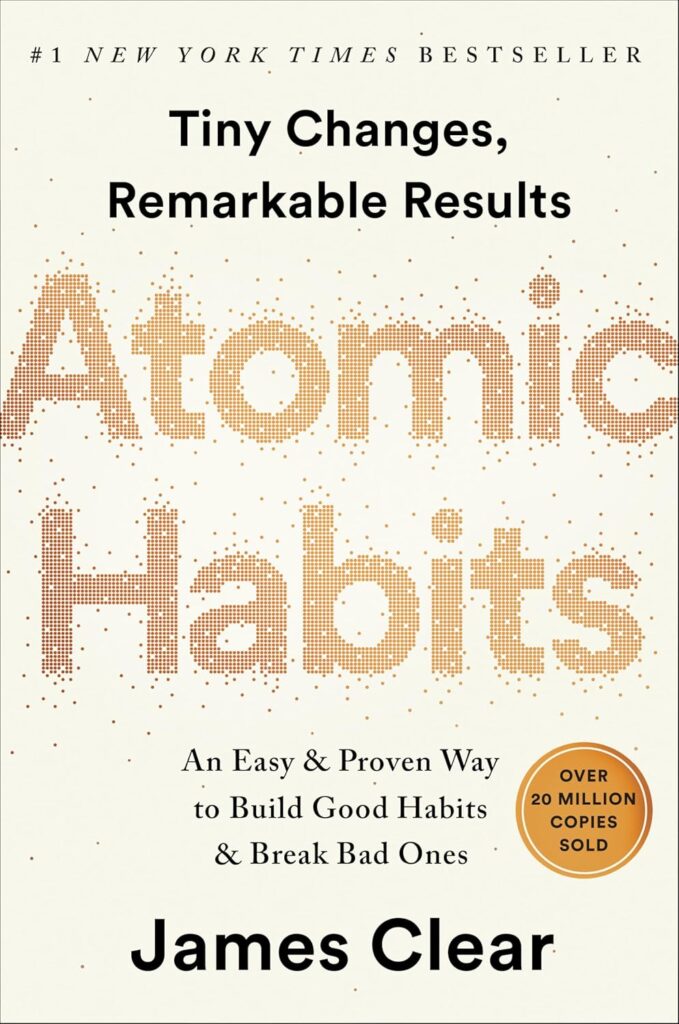Small actions may seem insignificant, even mundane. But when compounded over time, they shape the essence of who we are and who we become. That’s the foundation of James Clear’s transformative book, Atomic Habits. In it, Clear unpacks a deceptively simple yet deeply profound truth: small, incremental habits lead to monumental change. Whether you’re chasing discipline, productivity, or self-improvement, aligning daily habits with long-term goals is the key to a better life.
Table of Contents
Check out this video where James Clear explores how to stop losing momentum and build systems that truly work:
The Science of Habits: Why Small Changes Matter
Picture a plane taking off from Los Angeles to New York. Now, imagine if its trajectory shifted by just a few degrees. Initially, the change would appear negligible, but eventually, the plane would land in Washington D.C. instead of New York. That’s precisely how habits function—they offer compounding results over time.
Clear describes habits as the “compound interest of self-improvement.” By improving just 1% every day, you achieve remarkable progress over time. Conversely, ignoring minor bad habits results in accumulated setbacks. This exponential curve—either upward or downward—is the reason why seemingly tiny actions hold immense power.
Learn more about Atomic Habits and how small changes can redefine your trajectory on James Clear’s official site.
The Habit Loop: How Habits Work
To master habits, you must first understand the mechanics behind them. Clear identifies the habit loop as consisting of four stages: cue, craving, response, and reward.
- Cue is the trigger—your environment, an emotion, or a time of day.
- Craving creates the desire to act.
- Response is your behavior, the action taken.
- Reward satisfies the craving, reinforcing the habit.
By breaking this loop into its components, you gain power over it. Want to stop afternoon snacking? Eliminate the cue by keeping snacks out of reach. Desire to start exercising? Set out your workout gear the night before, making the cue obvious and response automatic. Habits aren’t destiny; they’re systems waiting to be redesigned.
The Plateau of Latent Potential
Imagine ice on a countertop, stubbornly unmelted at 28°F. Then, seemingly out of nowhere, at 32°F, it begins to soften, losing its rigidity. Change often operates in this manner: progress feels non-existent—until it isn’t.
Clear calls this the “Plateau of Latent Potential,” emphasizing that significant breakthroughs only come after sustained effort. Most people give up not because they’re incapable, but because they fail to endure long enough to see the transformation unfold. Discipline is the bridge between that frustrating plateau and visible progress.

Photo by Jessica Lewis 🦋 thepaintedsquare
The Four Laws of Behavior Change: Framework for Success
Building better habits isn’t guesswork; Clear simplifies it with his Four Laws of Behavior Change. Each law acts as a lever, amplifying your ability to create lasting routines.
Make it Obvious: Setting Clear Cues
Habits thrive when they’re visible. Want to drink more water? Place your water bottle somewhere you’ll see it. This technique, known as habit stacking, involves pairing a new habit with an existing one. For instance: “After I brew my morning coffee, I’ll write down three goals for the day.”
Implementation intentions—deciding when and where to act—are equally powerful. If you make a commitment like “I’ll jog in the park at 7 AM,” you’re 3x more likely to follow through. Visibility equals accountability.
Make it Attractive: Creating Desire
Nobody gravitates to what feels like punishment. To make a habit stick, tie it to something you already enjoy. Clear suggests temptation bundling: “I can watch my favorite show, but only while cycling on the exercise bike.”
Similarly, surround yourself with people whose behaviors you admire—your environment brims with influence.
Make it Easy: Simplifying Action
Humans resist complexity. By reducing the barrier to entry, habits become frictionless. Clear recommends the two-minute rule: shrink the habit to something so simple it feels impossible to fail. Instead of “read 50 pages nightly,” aim for “open the book and read one paragraph.”
When you lower the stakes, consistency triumphs over perfection.
Make it Satisfying: Reinforcing Progress
What gets rewarded gets repeated. Immediate gratification keeps habits alive during early stages when long-term benefits remain intangible. Using a habit tracker—like a notepad or app to mark daily wins—creates satisfaction. These small victories release dopamine, cementing the routine further.
If you’ve ever experienced the joy of crossing tasks off a to-do list, you already understand the power of immediate rewards.
The Role of Identity in Habit Formation
It’s tempting to obsess over outcomes: “I want to lose 20 pounds” or “I’ll save $5,000 this year.” However, Clear argues that focusing on identity is far more transformative. Instead of doing things to meet a target, focus on becoming the kind of person who embodies those values.
Shaping Identity Through Habits
Each habit becomes a vote for the person you want to be. Love running? Call yourself a “runner.” Those incremental decisions reinforce identity through action—not aspiration. Instead of saying, “I want to be healthier,” adopt, “I am someone who prioritizes health.” Consistency transforms these declarations from hope to reality.
The Impact of Environment on Identity
Environment is a silent architect of human behavior. Few people can resist temptation in a poorly designed space. If junk food is within sight, eating it becomes inevitable. Conversely, if you declutter distractions in your workspace, productivity finds you.
Curate surroundings that align with your desired habits, and your identity will naturally follow suit.
Practical Techniques for Building and Breaking Habits
Habits don’t need to rest on willpower alone. Practical tools ensure success even when motivation wavers.
Habit-Building Tools and Strategies
The Goldilocks Rule—challenging yourself just enough to stay engaged—is a cornerstone of habit-building. If it’s too easy, boredom creeps in; too hard, frustration wins. This delicate balance keeps habits sustainable.
Small wins also matter more than big leaps. Did you write only 100 words today? Perfect—it’s still progress.
Overcoming Bad Habits
Breaking bad habits requires flipping the Four Laws upside-down: hide cues (make it invisible), diminish rewards (make it unsatisfying), and create friction (make it hard). Self-awareness is crucial—track triggers and replace negative behaviors with alternatives.
For example, if you scroll on your phone at night, replace it with leaving the device in another room. Suddenly, your default behavior changes.
Conclusion
In the end, Atomic Habits offers a revolutionary yet practical philosophy: it’s not the grand gestures but the minuscule, repeated actions that sculpt us. By following the Four Laws, redefining identity, and respecting the power of environment, anyone can reimagine their life—one habit at a time.
As Clear writes, “You do not rise to the level of your goals. You fall to the level of your systems.” So, what systems will you start building today?
To dive deeper into Atomic Habits, explore James Clear’s comprehensive guide. Transformation awaits—you just need to take the first small step.

